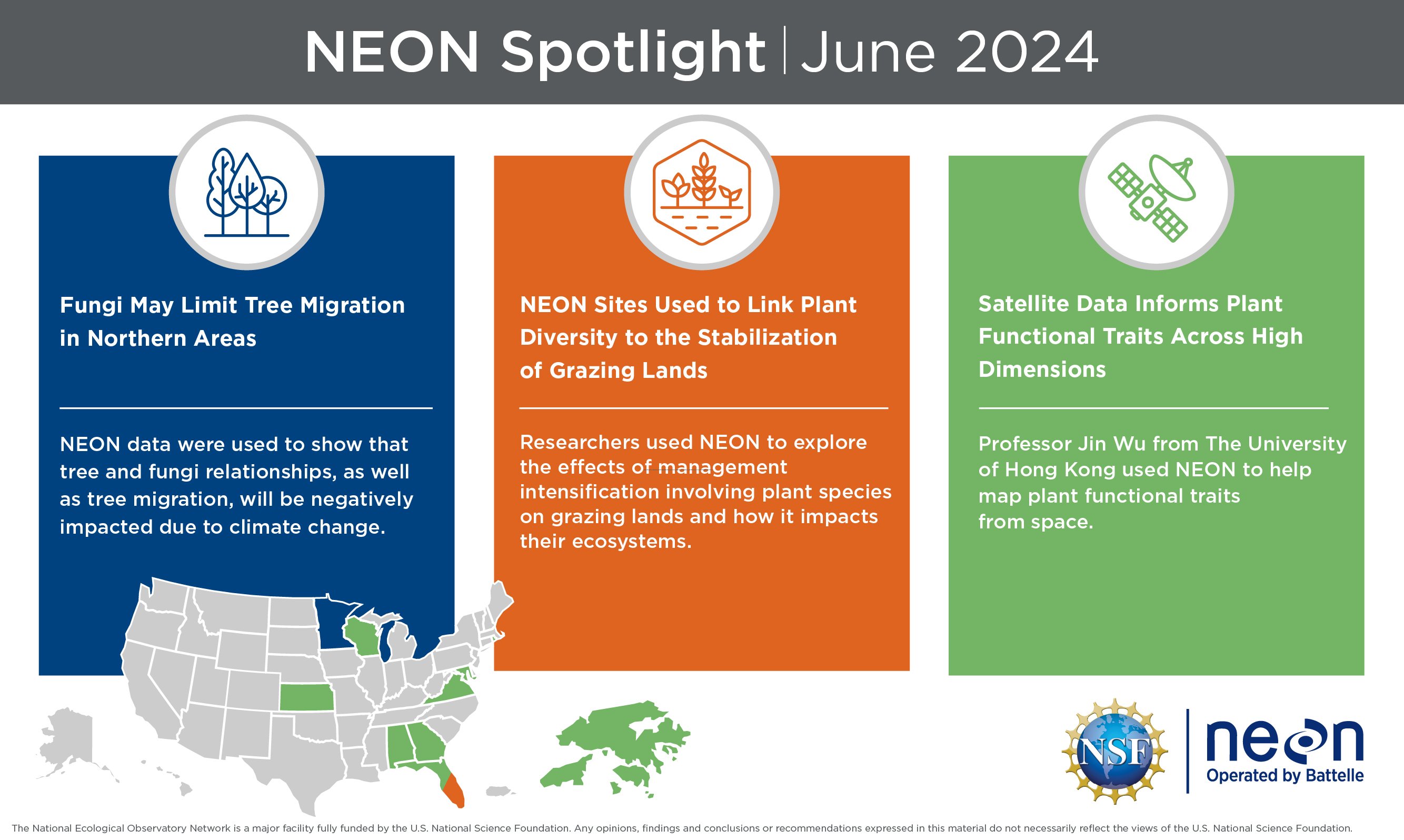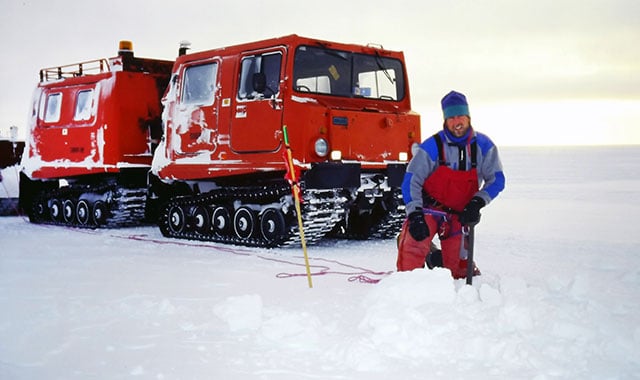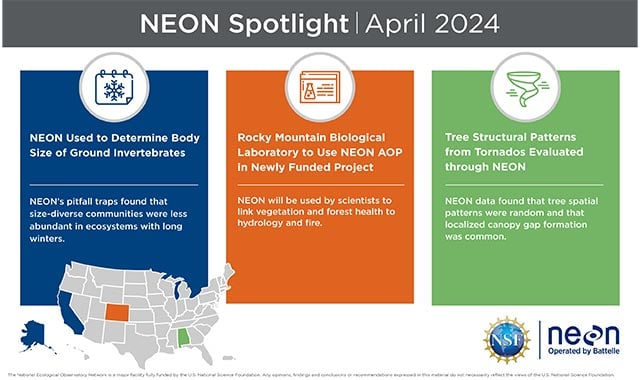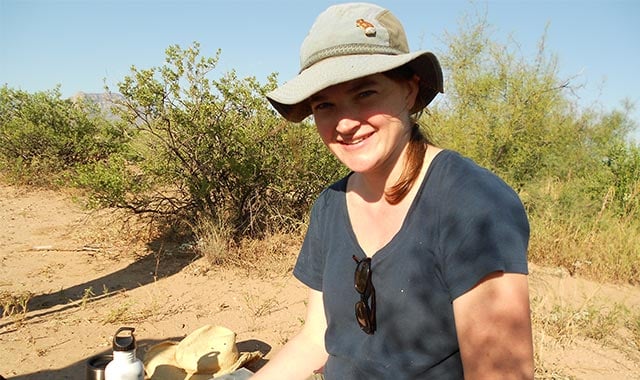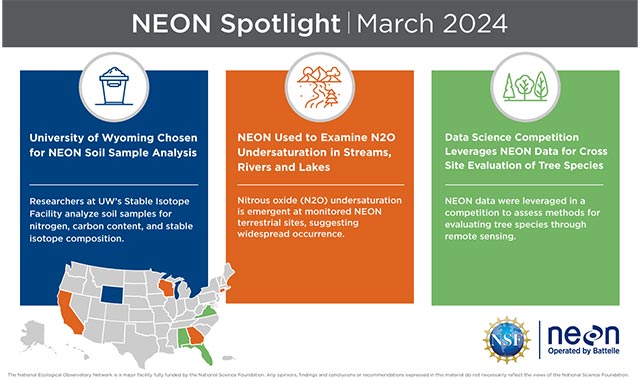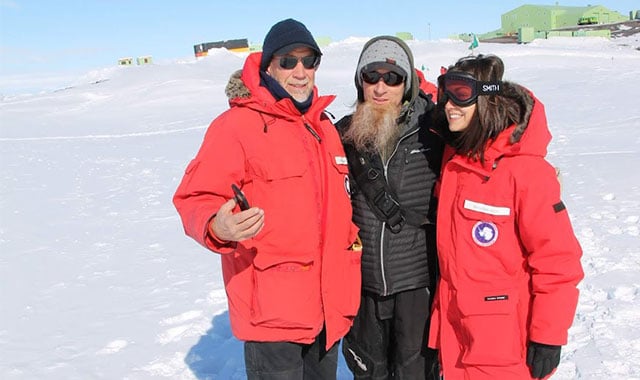September 2023 What’s New with NEON?
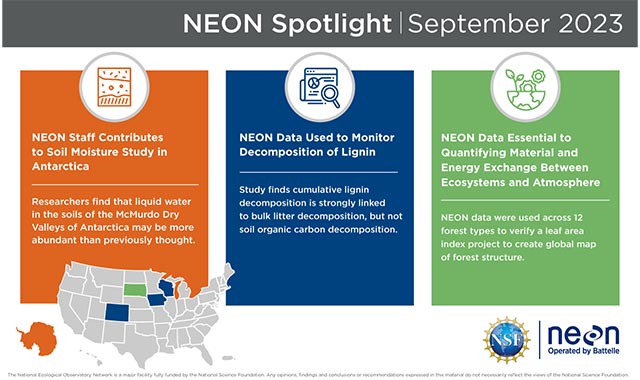
September’s NEON Spotlight highlights three new stories demonstrating how scientists are leveraging NEON data in their efforts to expand the capabilities of ecological science. This month, we are spotlighting how NEON plays a role in verifying leaf area index for forest structures, the abundance of liquid water in soils in Antarctica, and links between cumulative lignin decomposition and bulk litter decomposition. NEON data continue to be instrumental in advancing our comprehension of the natural world, fueling public knowledge, and sharpening our ability to address pressing environmental challenges.
This Month’s Spotlight
The latest news from NEON includes:
- NEON Staff Contributes to Soil Moisture Study in Antarctica
A study involving a NEON staff member used multispectral satellite remote sensing techniques to measure soil moisture content throughout the Lake Fryxell Basin in the McMurdo Dry Valleys of Antarctica throughout the region’s summer. This type of tool, which evaluates surface soil moisture distribution, is valuable for understanding ecosystem functioning. The soil moisture throughout the McMurdo Dry Valleys is highly variable and patchy as a result of buried ice, proximity to other water sources, presence of salts, and the topography of the subsurface ice table, making it challenging to accurately measure with other tools. The study found that liquid water in the soils of the McMurdo Dry Valleys may be more abundant than previously thought and that the distribution and availability of liquid water are reliant on both soil properties and the distribution of water sources. These findings will help with future identification and detection of ecological hotspots and changes in soil as well as monitor how the Antarctic landscape responds to climate change. - NEON Data Used to Monitor Decomposition of Lignin
Data from 20 NEON sites were used to examine decomposition of lignin, bulk litter, and soil organic carbon (SOC) to test predictors of decomposition in mineral soils across North America. Scientists found that cumulative lignin decomposition varies among soils and is strongly linked to bulk litter decomposition, properties that are not observed with SOC decomposition. In fact, there are almost entirely negative relationships between extractable soil metals and SOC decomposition. These findings disprove the idea that slow decomposition of lignin residues limits the decomposition of total SOC and highlight the importance for future models to include contrasting geochemical and microbial controls on decomposition of lignin and litter vs. SOC, in addition to the traditional variables of climate, residue quality, and nutrient availability. - NEON Data Essential to Quantifying Material and Energy Exchange Between Ecosystems and Atmosphere
Researchers used point cloud lidar data from NEON, covering 12 forest types across the United States, to assess the accuracy of Global Ecosystem Dynamics Investigation’s effective leaf area index (GEDI LAIe), which evaluates energy exchanges between terrestrial ecosystems and the atmosphere. The reference datasets of NEON lidar GEDI LAIe are environmentally distributed over the continental United States, which spans 17 eco-climatic geographic units and contains rich forest types. The findings validate that GEDI LAIe is generally an accurate tool, but also identify factors (e.g., forest type) with the potential to impact its measurements.
Sponsored by the National Science Foundation (NSF) and operated by Battelle, NEON is a continental-scale ecological observatory network dedicated to providing high-quality, consistently generated, standardized data that are free and available to all users. By enabling scientists, researchers, and students to address critical questions and understand ecosystem changes over time, the NEON program allows the ecological community to tackle questions and problems at a scale that was not possible before.
You can read about the latest work and research in the NEON Spotlight every month at Inside Battelle, and on our social media channels. For more information about NEON, visit NEONscience.org.
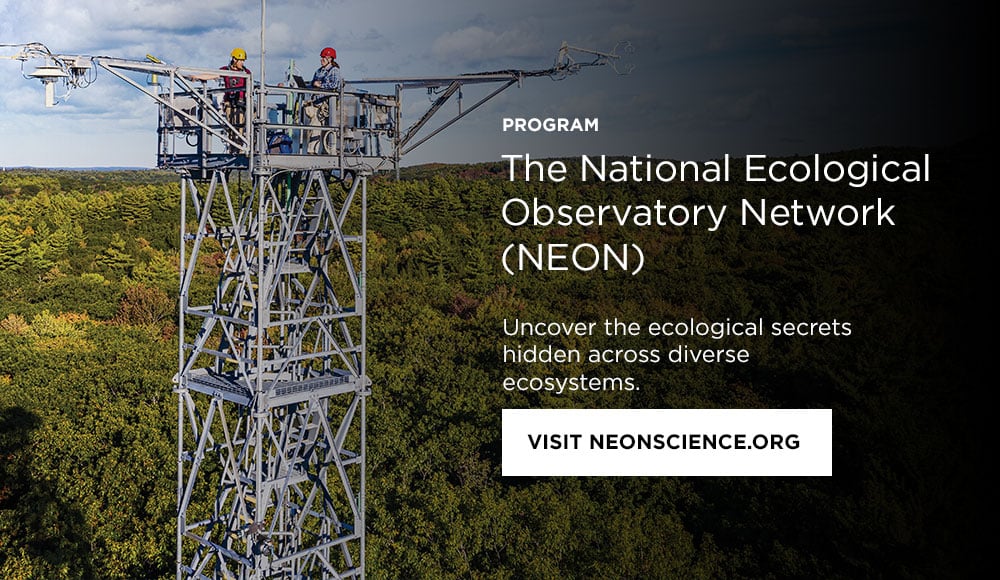
Related Blogs
BATTELLE UPDATES
Receive updates from Battelle for an all-access pass to the incredible work of Battelle researchers.
